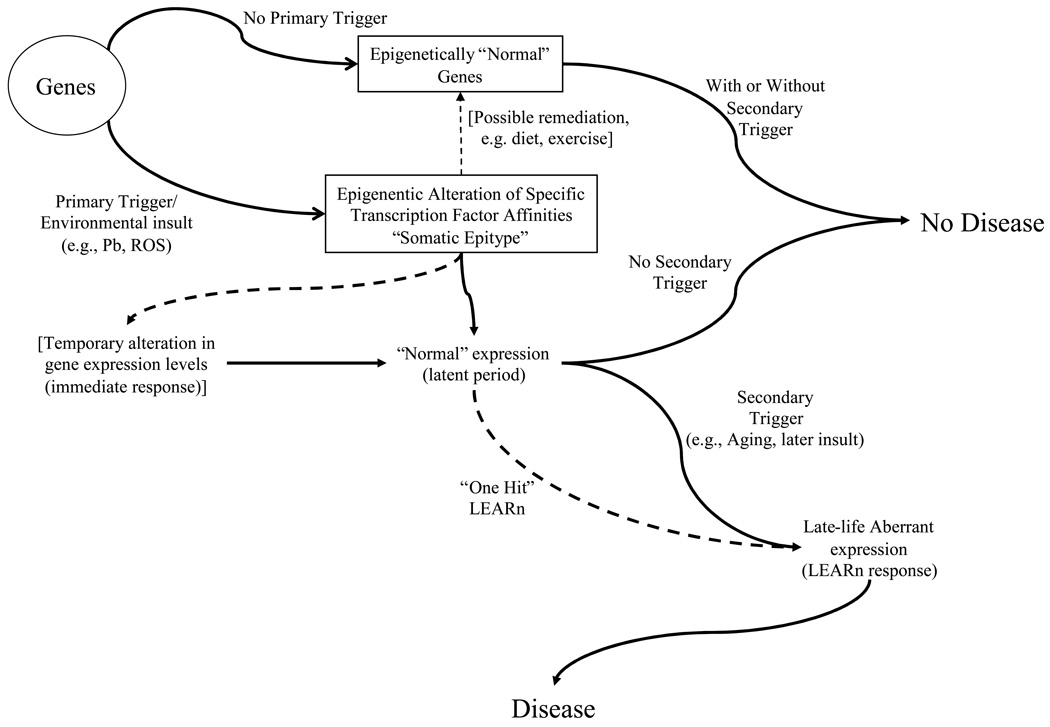Fig. 3. The LEARn model.
Schematic representation of LEARn–type disease progression. A gene or genes associated with a disorder may be subject to an environmental “first trigger”, such as exposure to Pb or ROS. This results in an epigenetically marked gene, through methylation, oxidative damage of DNA, and/or chromatin rearrangement. The epigenetically marked gene may undergo a temporary change in expression levels, but this returns to “normal” levels. If a secondary trigger, such as additional environmental insult or systemic changes in gene expression patterns associated with aging, further affects the gene(s), expression levels deviate from normal, resulting in a disease state. Dotted lines represent alternate pathways.

